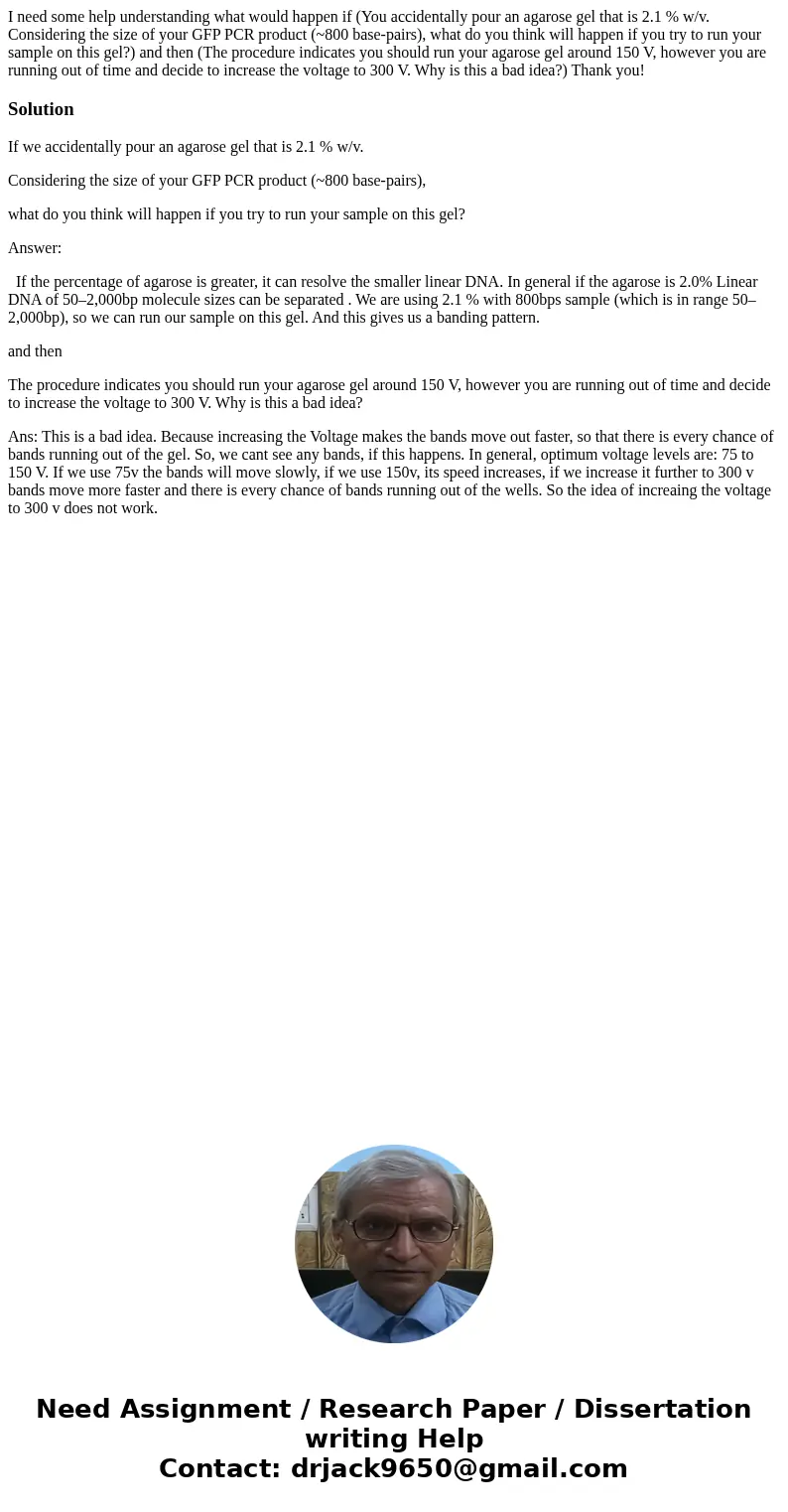I need some help understanding what would happen if You acci
I need some help understanding what would happen if (You accidentally pour an agarose gel that is 2.1 % w/v. Considering the size of your GFP PCR product (~800 base-pairs), what do you think will happen if you try to run your sample on this gel?) and then (The procedure indicates you should run your agarose gel around 150 V, however you are running out of time and decide to increase the voltage to 300 V. Why is this a bad idea?) Thank you!
Solution
If we accidentally pour an agarose gel that is 2.1 % w/v.
Considering the size of your GFP PCR product (~800 base-pairs),
what do you think will happen if you try to run your sample on this gel?
Answer:
If the percentage of agarose is greater, it can resolve the smaller linear DNA. In general if the agarose is 2.0% Linear DNA of 50–2,000bp molecule sizes can be separated . We are using 2.1 % with 800bps sample (which is in range 50–2,000bp), so we can run our sample on this gel. And this gives us a banding pattern.
and then
The procedure indicates you should run your agarose gel around 150 V, however you are running out of time and decide to increase the voltage to 300 V. Why is this a bad idea?
Ans: This is a bad idea. Because increasing the Voltage makes the bands move out faster, so that there is every chance of bands running out of the gel. So, we cant see any bands, if this happens. In general, optimum voltage levels are: 75 to 150 V. If we use 75v the bands will move slowly, if we use 150v, its speed increases, if we increase it further to 300 v bands move more faster and there is every chance of bands running out of the wells. So the idea of increaing the voltage to 300 v does not work.

 Homework Sourse
Homework Sourse